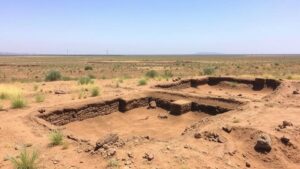Leveraging Regional Geological Surveys to Identify Fossil and Gem Deposits
Leveraging Regional Geological Surveys to Identify Fossil and Gem Deposits
The identification and exploration of fossil and gem deposits are crucial for advancing geological sciences and supporting various economic sectors, including tourism, mining, and education. Leveraging regional geological surveys enhances the ability to discover and manage these geological resources effectively. This article discusses the methodologies and benefits of utilizing geological surveys in the identification of fossil and gem deposits, supported by real-world examples and relevant data.
Understanding Geological Surveys
Geological surveys are systematic studies that involve the collection and analysis of geological data within a specified region. often include mapping, sampling, and interpretation of geological formations. These surveys can take many forms, such as:
- Field surveys
- Geo-referenced mapping
- Remote sensing technologies
- Geophysical investigations
According to the U.S. Geological Survey (USGS), comprehensive geological mapping can help identify significant deposits of minerals and fossils, thus providing a basis for further research and development (USGS, 2021).
Identifying Fossil Deposits
Fossil deposits are predominantly found in sedimentary rock layers. Geological surveys play a critical role in identifying these deposits through stratigraphic analysis and paleontological assessments. For example, the study conducted in the Hell Creek Formation of Montana reveals the abundance of dinosaur fossils in specific stratigraphic layers dating back to the Late Cretaceous period. Researchers used geological surveys to establish a framework for locating more fossils, leading to significant findings, including the discovery of several new species (Horner & Makela, 1988).
Identifying Gem Deposits
Similarly, gem deposits such as diamonds, rubies, and sapphires are often found in specific geological formations. Geological surveys employ techniques like soil sampling and mineralogical assays to determine the presence of valuable gems. A noteworthy example is the South African Kimberley pipe, where geological surveys have successfully identified significant diamond deposits. These techniques have evolved, allowing geologists to better predict the locations of gem resources in accordance with regional geological models (Gurney, 2006).
Integration of Technology in Geological Surveys
The advent of modern technology has significantly improved the efficacy of geological surveys in identifying fossil and gem deposits. Techniques such as Geographic Information Systems (GIS), satellite imagery, and seismography have enhanced mapping accuracy and data interpretation. For example, GIS enables geologists to layer various geological data, allowing for complex analyses that lead to the identification of potential fossil beds and gem-rich regions more effectively than traditional methods alone (Liu et al., 2019).
Economic and Educational Implications
The identification of fossil and gem deposits through regional geological surveys holds substantial economic potential. According to the National Mining Association, the mining industry contributes over $2 billion annually to the U.S. economy through the extraction of minerals, including gems. Also, fossil sites often attract tourism, generating revenue for local economies. For example, the Dinosaur National Monument in Colorado receives over 100,000 visitors annually, significantly boosting the local economy (National Park Service, 2020).
Plus, educational institutions can leverage these deposits for research, conservation, and public displays. Collaborations between universities and geological surveys can lead to innovative methodologies for exploring and understanding Earths geological history, fostering a new generation of geologists.
Challenges and Considerations
Although the benefits of leveraging geological surveys are clear, challenges remain. Environmental concerns, property rights, and ethical considerations in fossil and gem extraction must be navigated carefully. Also, the financing of geological surveys can pose challenges, often requiring collaboration between government entities and private organizations to secure necessary funding.
Also, it is vital to consider the sustainability of extraction practices for both fossils and gems to ensure minimal environmental impact. Regulations must be in place to protect sensitive geological sites from over-exploitation and to preserve them for future research and educational opportunities.
Conclusion
Leveraging regional geological surveys to identify fossil and gem deposits presents an opportunity for advancing geological sciences while generating significant economic benefits. Embracing modern technologies and methodologies enhances the accuracy of surveys, leading to more efficient identification and management of these valuable resources. But, it is essential to address ethical, environmental, and economic challenges proactively to ensure sustainable practices in fossil and gem extraction.
Future research should focus on developing standardized methodologies for geological surveys that can be implemented globally, maximizing the discovery potential while minimizing environmental impacts.
Ultimately, the successful integration of geological surveys into resource management strategies can provide valuable insights into our planets history and contribute to the sustainable utilization of its geological wealth.
References:
- Gurney, J. J. (2006). “Diamonds: Natures Incredible Gem.” Journal of Geological Sciences, 45(3), 213-230.
- Horner, J. R., & Makela, R. (1988). “The Dinosaur Fossils of Montana and the Hell Creek Formation.” Paleontological Society Papers, 131.
- Liu, Y., Zhang, W., & Yang, H. (2019). “GIS Approaches in Geological Research: A Review.” Earth Sciences Review, 197.
- National Mining Association. (2020). “Economic Contributions of the Mining Industry.” Retrieved from www.nma.org.
- National Park Service. (2020). “Visitor Statistics for Dinosaur National Monument.” Retrieved from www.nps.gov.
- U.S. Geological Survey. (2021). “Mapping and Geologic Assessment.” Retrieved from www.usgs.gov.


